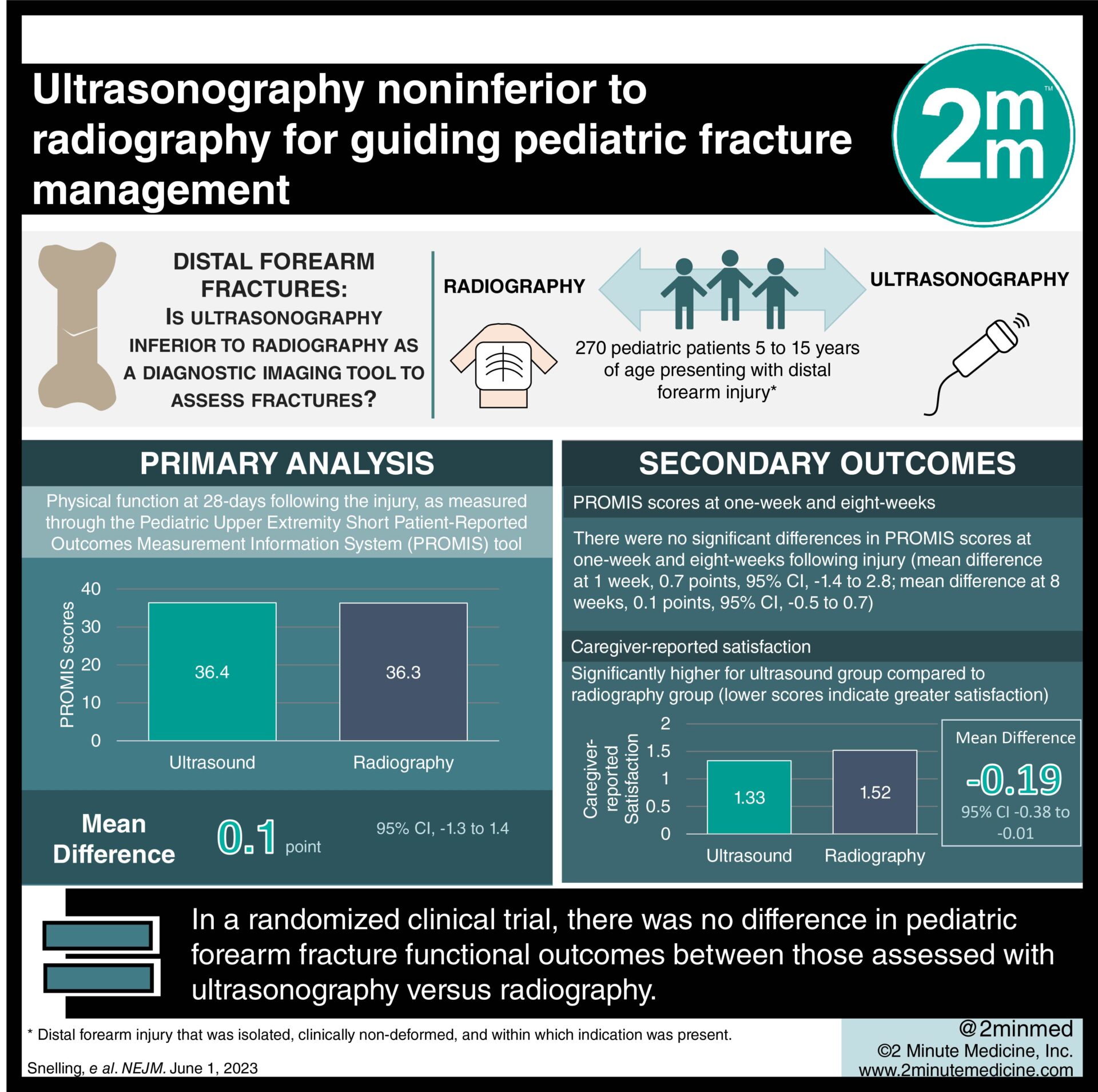1. In this randomized controlled trial, there was no difference in pediatric forearm fracture functional outcomes between those assessed with ultrasonography versus radiography.
2. Ultrasonography was associated with higher caregiver satisfaction compared to radiography.
Evidence Rating Level: 1 (Excellent)
Study Rundown: Due to the biomechanical properties of developing bones, distal forearm fractures are a common presentation among children in the emergency department. Within higher-income countries, radiography is regularly performed, given its availability and utility in ruling out fractures. However, it is often less readily available in many low- and middle-income countries, where ultrasonography may be more accessible. Ultrasonography may confer several benefits, a key strength being its compliance with maintaining radiation levels as low as possible for pediatric populations. Currently, the efficacy of ultrasonography as an initial diagnostic method for children with isolated distal forearm injuries has yet to be demonstrated. This was a multicenter, randomized trial evaluating functional outcomes of distal forearm injuries amongst children presenting to the emergency department by the initial diagnostic method of choice: ultrasonography compared to radiography. The primary results of the analysis found that ultrasonography was not inferior to radiography with regards to functional outcomes at four-week follow-up. There were also no significant differences in rates of adverse events. Caregivers also demonstrated higher self-reported satisfaction with ultrasonography compared to radiography. A limitation of this study is the duration of follow-up, which does not allow sufficient time elapsed to capture rare long-term complications. Overall, this was a positive trial providing evidence of the noninferiority of ultrasonography to radiography with regards to functional outcomes amongst children with distal forearm injuries presenting to the emergency department.
Click here to read the study in NEJM
In-Depth [randomized controlled trial]: This was a randomized, noninferiority trial evaluating the functional outcomes relating to choice of diagnostic imaging comparing ultrasonography to radiography amongst pediatric patients with an isolated distal forearm injury in Australia. The primary outcome of interest was physical function at 28-days following the injury, as measured through the Pediatric Upper Extremity Short Patient-Reported Outcomes Measurement Information System (PROMIS) tool. Pediatric participants were included if they were between the ages of 5 and 15-years old presenting to the emergency department with a distal forearm injury which was isolated, clinically non-deformed, and within which indication for imaging was present. After applying the inclusion and exclusion criteria, 270 participants were randomized in a 1:1 ratio to either ultrasonography (n=135) or radiography (n=135). Primary analysis of the results found that ultrasonography was noninferior to radiography in functional outcomes at four-weeks (mean difference, 0.1 point; 95% confidence interval [CI], -1.3 to 1.4). Secondary analysis found there was no significant differences between incidence of complications, nor the PROMIS score at one-week and eight-weeks following injury. However, caregiver-reported satisfaction was significantly higher for ultrasonography comparatively to radiography at four-weeks (mean difference, -0.19 points; 95% CI, -0.37 to -0.01). In summary, this study found that ultrasonography as an initial method of diagnostic imaging amongst children aged 5 to 15 with isolated distal forearm injuries is noninferior to radiography.
©2023 2 Minute Medicine, Inc. All rights reserved. No works may be reproduced without expressed written consent from 2 Minute Medicine, Inc. Inquire about licensing here. No article should be construed as medical advice and is not intended as such by the authors or by 2 Minute Medicine, Inc.









